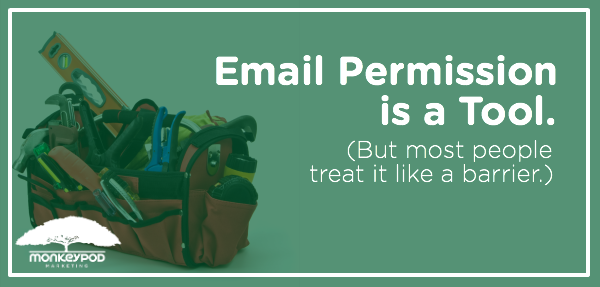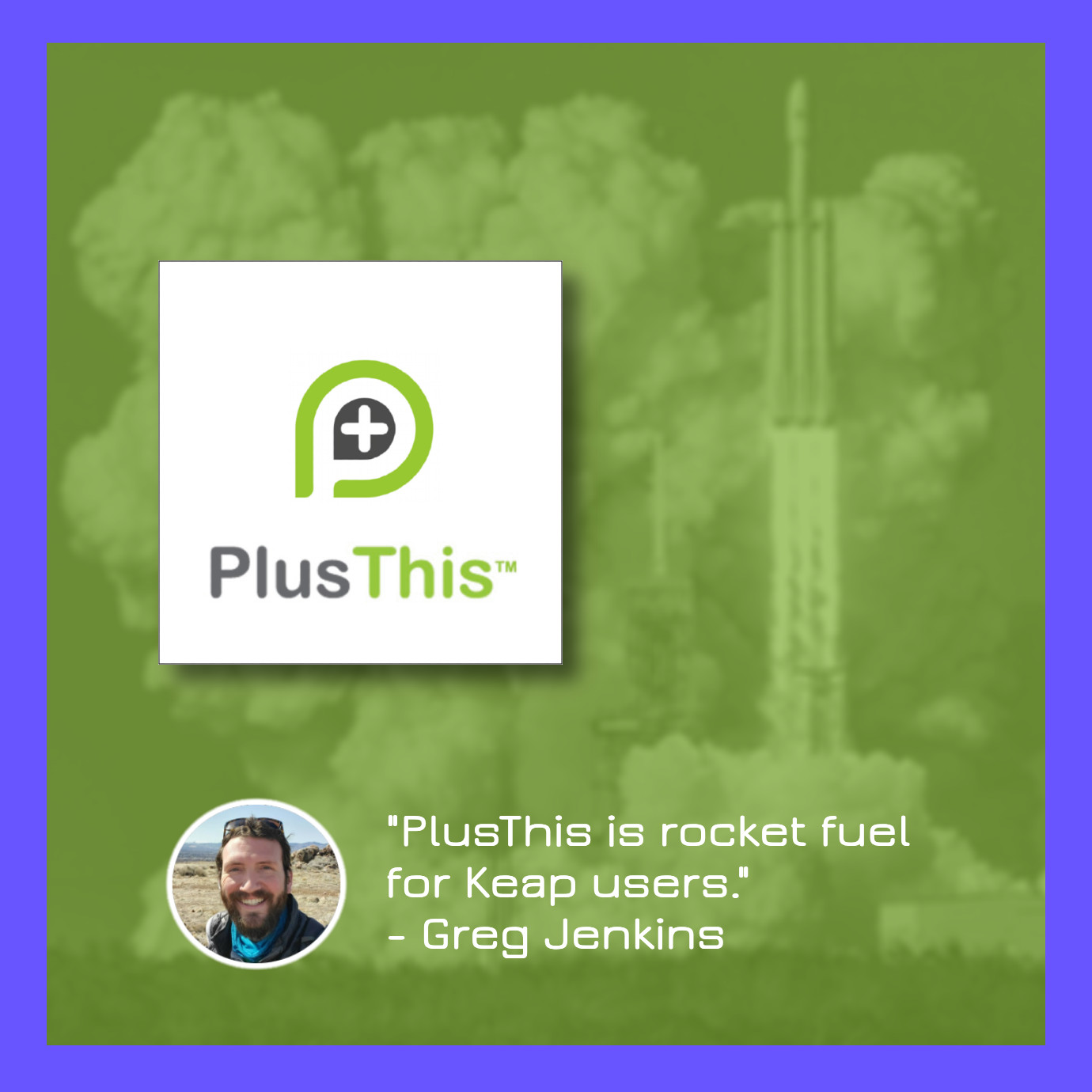If you met me while I was training at Infusionsoft University, you may remember that one of my favorite sessions was all about email permission. This often stood out to people because email permission isn’t exactly a sexy topic. When compared to teaching lifecycle marketing concepts, saving people time with internal automation, or learning the intricacies of the Infusionsoft campaign builder it doesn’t even compare. But, the reason I like it so much is because I think most people are thinking about email permission all wrong. And I love helping people think about things differently.
 Email permission is a tool.
Email permission is a tool.
But unfortunately most people see it as a barrier. A hurdle they have to clear, or a box they have to check. When in reality it’s a powerful tool if you wield it appropriately. It’s not JUST to protect the recipient’s inbox. It is that. But it’s more than that. Think about it this way: Your prospects are willing to tell you exactly what they want. They’ll raise their hands and say “This is what I’m interested in.”
And all you have to do is listen; then you can send them information, details and promotions that are tailored for them. It’s a win-win. From the prospects point of view, they’ll feel like they’re being heard, and that their preferences are respected.
They’re getting fewer emails, and the emails will resonate with them more. They’ll trust your brand more. And they’ll start to see that you “get” them.
From your side of things, you’ll notice that email opens and clicks will go up. Unsubscribes and spam complaints will go down. All in all, you’ll have a happier, more engaged list. Remember, I said “All you have to do is listen”.
The problem here is that most people don’t listen.
Most people segment their list poorly, or worse, don’t segment them at all. If you’re emailing your entire audience anytime you have anything to say, you’re doing a couple of things:
You’re rubbing your list the wrong way. You’re showing up and crossing your fingers hoping it happens to be something they want. Your relationship with their inbox is too valuable to just roll the dice like that.
You aren’t letting them tell you what they want. If you send everyone everything, then you aren’t taking into account what they want from you. Nothing says “I don’t care about what you like, Greg” like Banana Republic emailing me whenever women’s purses are 20% off. (Go ahead, make your jokes)
You’re conditioning them to ignore your messages. By emailing them more frequently, about less relevant subject matter, you’re training them that your brand isn’t for them. And even if you do have messages that they’d love to receive, they could easily be lost in all the other noise you’re creating.
So, like I said, Email Permission is a tool. And here’s how you can use it:
It’s a measure of engagement. Someone who has requested your newsletters, your promotions and your blog updates is much more engaged them someone who has only requested your free whitepaper.  The good news is that people are already telling you what they want. By clicking links in your various broadcasts and messages, they’re raising their hand and saying “This is who I am” or “This is what I’m into“.
The good news is that people are already telling you what they want. By clicking links in your various broadcasts and messages, they’re raising their hand and saying “This is who I am” or “This is what I’m into“.
All you have to do is start listening.
Most email marketing platforms allow you to track the links they click, by measuring this behavior you can quickly build a profile and use that information to make sure that they receive the offers that are best suited for what you know about them. I’ve gotta acknowledge the drawbacks to learning about your prospects by this method: It can take time. And there is a margin of error. For example, what if I click on a link (and you tag me) and then I realize I have no interest in whatever the topic of that link was. Or I misunderstood what it was. Or I already have that product.
Well, if you’ve captured that as me expressing interest, you have no way of knowing that I changed my mind.
But, if you send emails regularly, and you’re linking out to topics in certain genres, and if you’re tracking which links they click. Well, over the course of a few months you’ll begin to get a pretty good picture of the type of content that person is looking for. As you learn more about them, you can send them more of the stuff they like.
Keep your list happy. The old mantra “The Money is in the List” is still accurate, but it’s not in the size of the list, it’s in the relationships you’ve cultivated with it.
I’d love to hear your take, or any questions, in the comments below. Oh, and if you’re an Infusionsoft user looking to take this to the next level, check out this post where we build an email preferences center in less than 16 minutes.





Great post Greg!
It’s so true. The gold is in segmentation and refined messaging for each of the segments.
This isn’t always easy to do but the lil extra work pays big dividends!
Thanks man, and thanks for reading. I agree. People want to know that you’re listening, and respecting what they’re telling you. And the less work it is to them, the more they appreciate it. I’ve got a follow up post scheduled for Monday that will kick this up a notch!
Great post, Greg, and so true. Businesses that succeed in the future will do so by paying attention to their customers wants and needs, then acting on them.
We all get too many emails. Companies that email only topics of interest to me are the companies that will earn my business for the long haul.
Cheers, man!
E-Bird! Swooping in from Iowa with the comment!
I agree. If you think of email, and automation, like a personal conversation. It’s a two way street. You may not have back-and-forth dialogue, but you still need to listen to what your prospects (or customers) are telling you. It is NOT just about what you have to say.
Cheers indeed! Tell Janet I said Hey. She’ll know what it means.